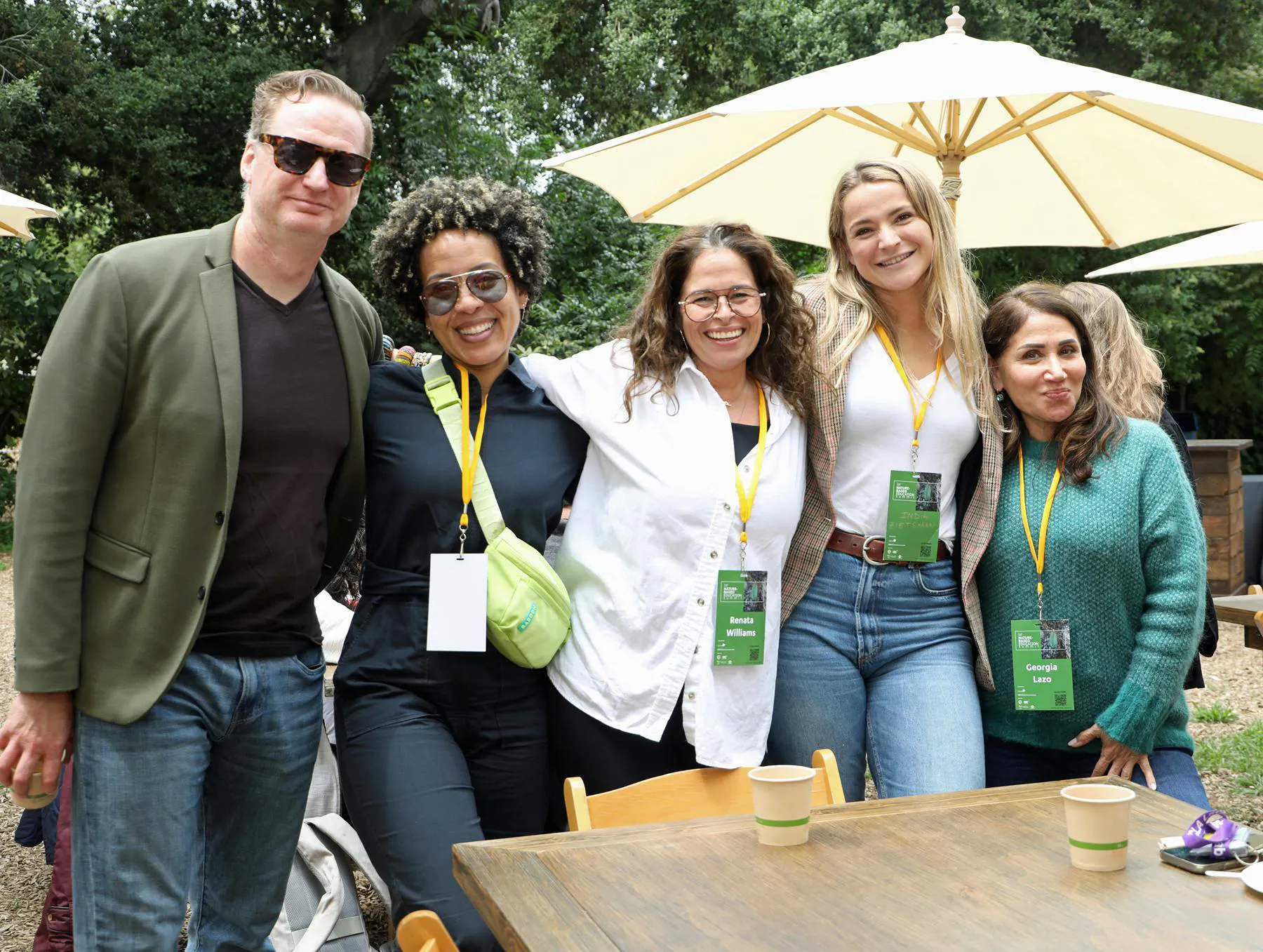Experts and educators at the inaugural event on May 4 highlighted the importance of fostering a healthy relationship between children and nature.
By Gabriel K. Santi
Transforming schools as hubs for connecting children with nature and climate solutions is critical to raising environmentally conscious citizens and protecting the future of the planet, according to experts and educators at the inaugural Nature-based Education Summit, held at UCLA Lab School on May 4. The importance of fostering a healthy relationship between children and nature was a theme echoed throughout the event, hosted by the Alana Foundation and the UCLA School of Education & Information Studies.
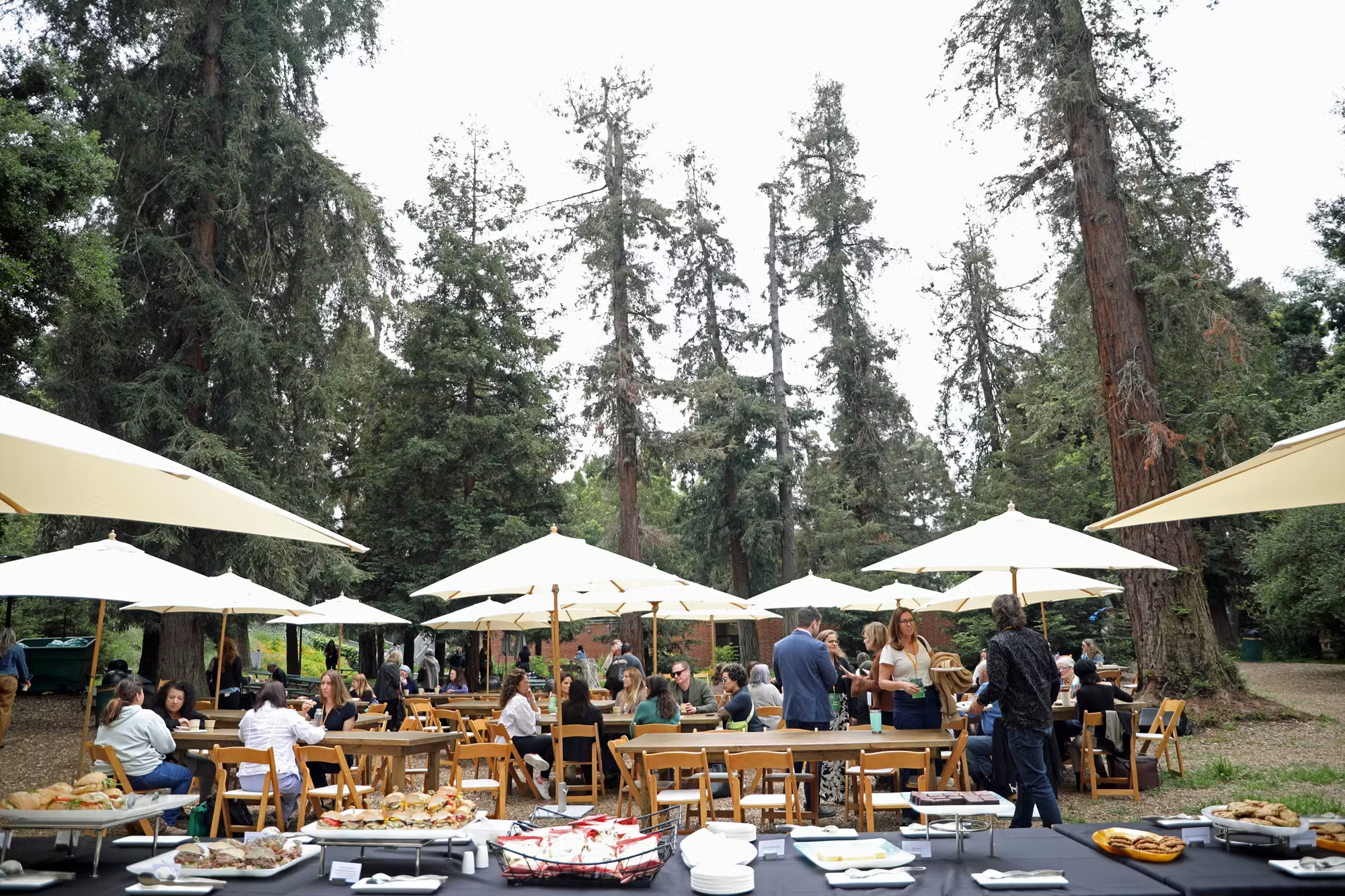
The natural setting of the UCLA Lab School served as backdrop for a discussion by thought leaders on raising children to protect the future of the planet.
Photo by Ruth Souza
UCLA Lab School was built in 1950 and designed by Richard Neutra and Robert Alexander, pioneers of mid-20th Century architecture, who utilized the natural setting of the northern end of the University to advantage, including a redwood forest, Stone Canyon Creek, and 28 species of trees. Environmental thought leaders, educators, activists, and policymakers gathered at the site to discuss the primary role of nature in play and learning, as well as the transformation of schools and communities into spaces of climate resilience.
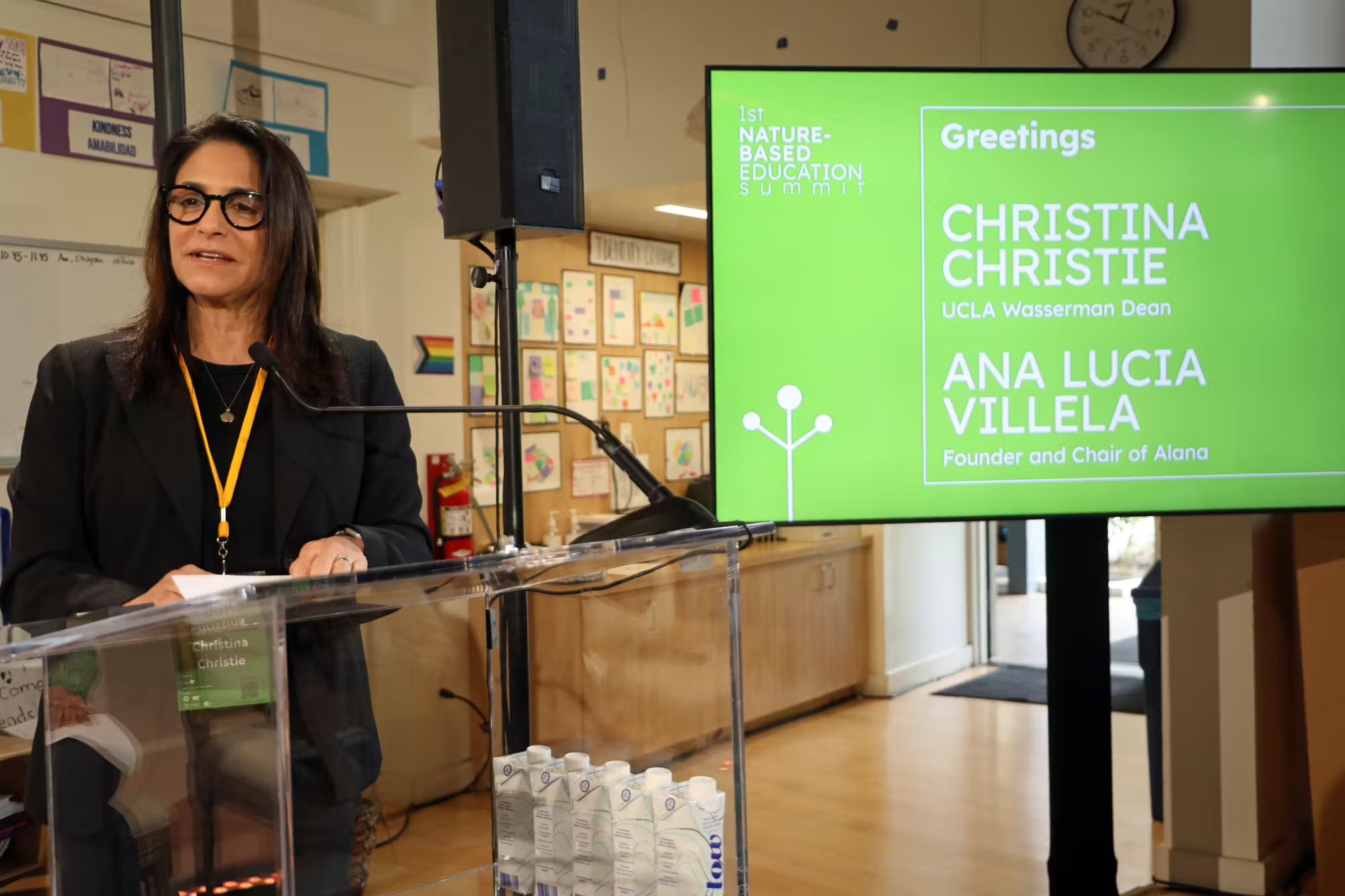
Wasserman Dean Christina Christie welcomed guests to the Summit and underscored the role of schools in helping to shape the future of the planet.
Photo by Ruth Souza
“We are honored to have the opportunity to help gather experts, create connections, and facilitate the discussion around such critical topics,” said Christina Christie, Wasserman Dean of SEIS. “Schools and educators play a central role in helping shape the future of our planet.”
Ana Lucia Vilela, founder and president of the Alana Foundation opened the event and helped relay the critical importance of motivating others to expand nature-based education throughout schools and communities.
“The idea is to inspire and connect the nature-based education community in the U.S. and around the world,” said Vilela. “The first essential is an intense love of nature.”
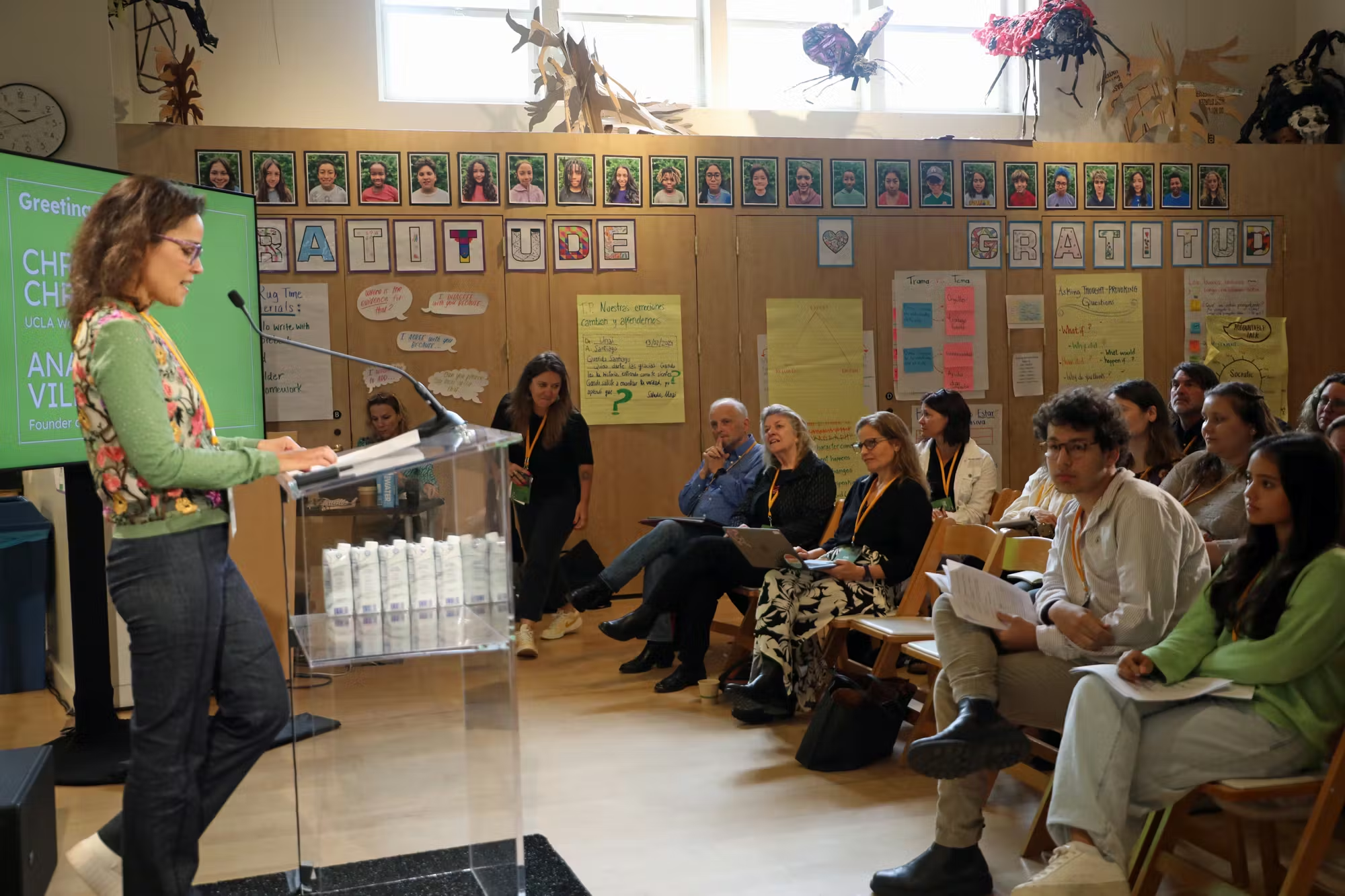
Ana Lucia Vilela, founder and president of the Alana Foundation, addressed the Summit, saying that, “an intense love of nature” is needed to inspire and connect the global education community.
Photo by Ruth Souza
Lais Fleury, head of partnerships with the Alana Foundation, a socio-environmental impact group of organizations that promotes and inspires a better world for children, was direct in her assessment.
“We only protect what we know and love,” Fleury said. “There is an urgent need to continue to nurture the connection between children and nature.”
Observing that climate change disproportionately affects children, summit topics included “How Green Schoolyards Create Economic Value” and “Schools as Spaces of Climate Resilience and Health for Children and Cities.” In addition, best-selling author Richard Louv underscored passages from his best-selling book, “Last Child in the Woods: Saving Our Children from Nature-Deficit Disorder.”
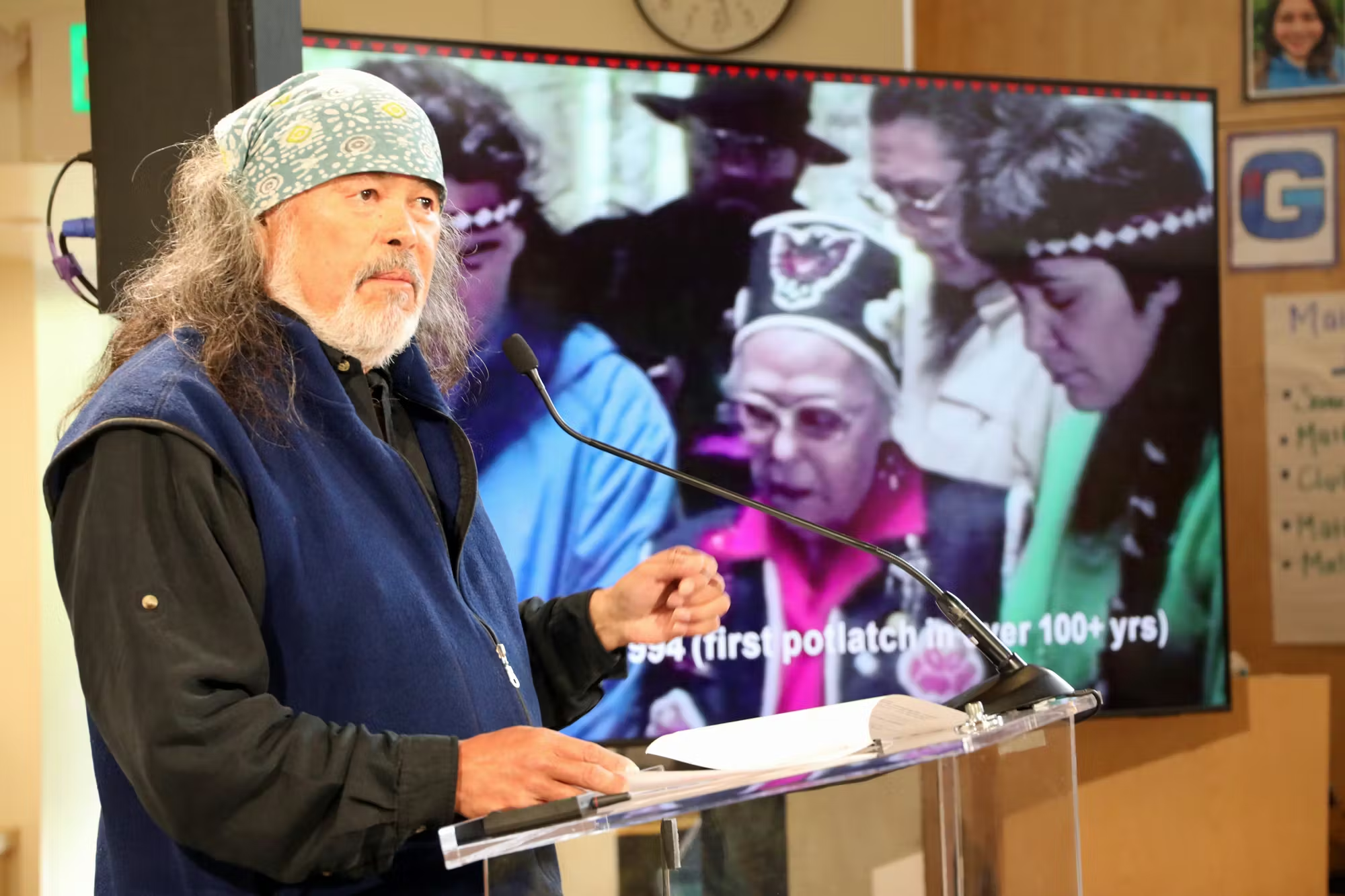
Dune Lankard, founder and president of the Native Conservancy, discussed the harmful environmental impacts of the 1989 Exxon Valdez oil spill.
Photo by Ruth Souza
Keynote speaker Dune Lankard, founder and president of the Native Conservancy, emphasized the importance of connecting children to the environment as he discussed the catastrophic impacts to Alaska’s Prince William Sound from the 1989 Exxon Valdez oil spill. An Alaskan Eyak, Lankard highlighted his native experiences and environmental work – including the preservation of the salmon habitat in Alaska in order to sustain the future of his ancestral region, its indigenous people, and sacred places – accentuating the important role indigenous wisdom plays in nature-based education.
“There’s still oil beneath the surface, still dead areas in Prince William Sound,” Lankard said.
UCLA Lab School demonstration teachers Noelani Morris and Chris Wilson and Assistant Principal Renata Christina Gusmão-Garcia Williams articulated how environmental education is enhanced by an inquiry-based approach to learning and how to develop a love for nature with young students, highlighting gardening projects within the school’s Climate Justice Education Program. In addition, best-selling author Richard Louv’s remarks underscored passages from his best-selling book, “Last Child in the Woods: Saving Our Children from Nature-Deficit Disorder.”
“In the sustainable gardening projects we’ve done this year, we’ve often asked children to consider the question: ‘What is your relationship to the land?’” said Wilson. “We really do view the environment as another teacher.”

A panel discussion was moderated by Cheryl Charles (at podium), co-founder, president, and CEO emerita of the Children & Nature Network. (L-R) Chris Wilson and Noelani Morris, teachers, UCLA Lab School; Lais Fleury, head of partnerships, Alana Foundation; Renata Gusmão-Garcia Williams, assistant principal, UCLA Lab School; and Tashanda Giles-Jones, STEM4Real instructional coordinator and environmental program specialist, Environmental Charter Schools.
Photo by Ruth Souza
